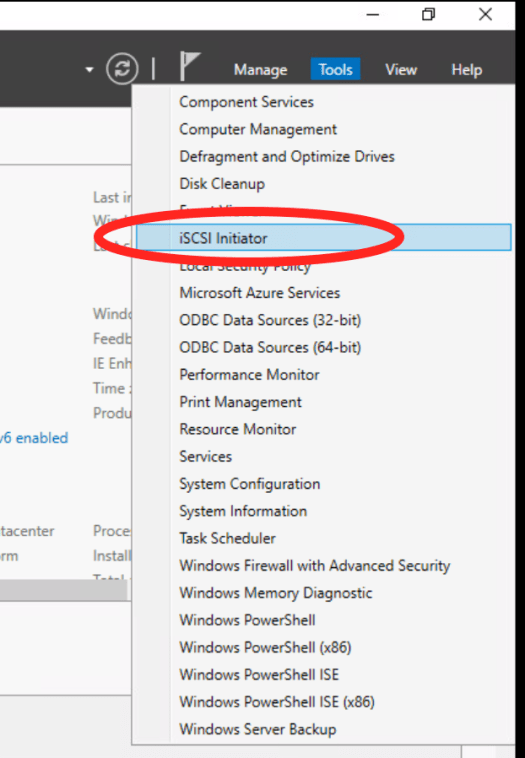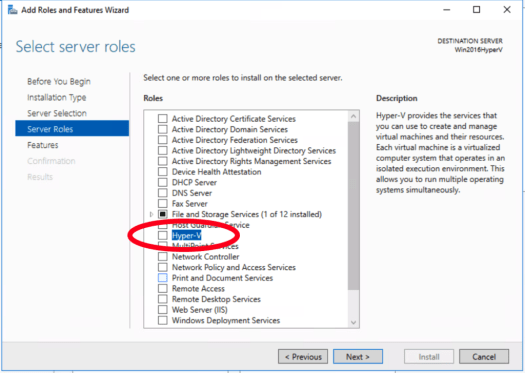VMware has for a pretty long time integrated (at least license wise) a backup engine with vSphere. It’s available as a stand alone OVA download but once deployed it integrates with the vSphere web client. The current release, version 6.1.3, was brought online on the 15:th of November 2016.
The new release of VMware Data Protection, VDP for short, supports VMware ESXi 5.1 or later, vSAN 5.5 or later.
Since it’s been a while since I last had my hands on VDP, I thought it be a good idea to see how the product has evolved. How to install, configure, backup and so on.
Full disclosure: Amongst others, I’m a Veeam Certified Trainer but I’ll try my best not to be too biased.
Installation is straight forward, get the VDP OVA from VMware bundled with vSphere and deploy the appliance to a host in your environment. I had some issues with my small home lab, DNS needs to be set up and configured correctly with both forward and reverse lookups. Since I don’t have DNS in my lab I was not able to get passed the initial configuration wizard in the VDP, merely altering the hosts file was not enough. But as usual, whenever I need to google a problem I always wind up on William Lam’s webpage – Thanks William! (note to self: Set the web browser start page to virtuallyghetto.com and save valuable time).
VMware has some best practices when deploying VDP:
- For a better performance of vSphere Data Protection in a high-scaled environment, where Data Domain is the destination or the target, use the following reference to deploy the number of virtual machines according to the capacity of vSphere Data Protection appliance:
| vSphere Data Protection Appliance Capacity |
Number of Virtual Machines to Deploy |
| 0.5 TB |
20 |
| 1 TB |
30 |
| 2 TB |
40 |
| 4 TB |
80 |
| 8 TB |
100 |
- For effective load balancing, deploy a maximum of 10 vSphere Data Protection appliances with 100 virtual machines per vSphere Data Protection appliance, in a single vCenter Server domain.
- In a large environment, deploy a maximum of 8 proxies per vSphere Data Protection appliance regardless the size of the vSphere Data Protection appliances.
- For better performance of backups and restores, limit the size of each virtual machine to a maximum of 2 TB.
Installing and configuring the VDP:
Once deployed and configured management of jobs are done using the vSphere web client, first thing to do is to connect to the VDP from the web client:

When connected you have a few options, creating a new backup job, verifying a backup job or restoring a backup. You can also download “Application Backup clients” which can be useful when managing VMs running SQL, Exchange or Sharepoint. The purpose of the agents are to get application consistent backup of VM and have the logs being truncated afterwards.

When you click on the Application Backup clients you end up on the configuration page of the VDP, at the bottom there are links to the individual clients. And on this page you can configure email settings or check log files as well if needed.

Creating a backup job is pretty easy, go through the wizard a change settings, select either “Guest images” or “Applications”. If you select Applications you can select what application and specific database you need to back up.

Select what to backup, entire VM or individual disks.

Now you select which VMs to backup, either select individual VMs or a parent container such as a resource pool or a host (or indeed the entire vCenter server). This is where I find myself questioning VMware’s approach a bit. Why can’t you use folders or tags? Grouping VMs in resource pools just for the sake of backup is a bad thing, resource pools are for dividing up resources and should never be used as a “backup grouping mechanism”. No Tags, folders and so on? Really VMware? Eat your own dog food.

Next you set up the schedule for the backup, you can only set up one backup/restore point per day at most. So you can’t really have advanced scheduling, is backing up a VM once a day good enough? If so then it’s not a problem.

Next, select how long you’d like to keep the restore point. You can either select a simple set up where you set how many days you store the backup or to a specific date but you also have the option of creating a GFS set up. A Grandfather, Father, Son backup is used if you’d like to save weekly, monthly or yearly backups. Nice!

Give the backup job a meaningful name.

Verify that everything is ok.

There you have it, quick and easy to set up. The GUI shows all your available backup jobs on the specific VDP.

Once the backup has been performed you might want to verify that the backup is actually useful, that it can be restored if need be.

Create a new backup verification job.

Select the virtual machines you want to verify.

A heartbeat test will be performed, i.e. the virtual machine will be powered on and VMware will verify that it has a heartbeat to the host (meaning that the operating system of the virtual machine actually started and that the VMware tools service started as well, which will indicated that we have a running OS). But if you provide a script of your own, and have it placed inside the VM you can basically test anything you want. You can perform a much more comprehensive and advanced test for your VMs with a script.

Select a host where you’d like to restore and power on the VM, make sure it has enough resources to actually perform the verification test.

Select the datastore to be used when restoring the VM. Again, the host has to have enough CPU and RAM available to power on the VM but more importantly it has to have enough diskspace as well. Since we have to restore the entire VM the host would need to have free disk space on a datastore. Might not be a problem if we’re verifying a small VM but what about your fileserver or that huge mail server? Do you have X TB available to actually be able to perform the test?

Set a schedule for the verification job, once a week perhaps?

And we give the job a meaningful name.

Verify that everything is ok.

Now we have a summary of all verification jobs available on this VDP server.

It’s possible to either schedule a verification job or to run it manually.

Files of the virtual machine will be restored to the designated datastore and to a folder named VDP_VERIFICATION_<vm-name> -<unique number>.

And there you have it, a successful backup verification performed. Now I have the confidence to restore this particular VM if it would break down for any reason.

Replication:
If you are serious about your backup data you would probably want to design the backup environment in a way that it is protected from a complete site failure. That’s not a problem in VDP, there’s a built in function to replicate your backup information making it easy to have a secondary copy of your data on a remote site.
Backups created with VDP 6.0 or later can be replicated to another VDP appliance, to an EMC Avamar server, or to a Data Domain system.
Emergency!
If you need to restore virtual machines, vCenter and VDP needs to be available however there is a way to restore directly to a host if needed. If for instance you need to restore vCenter itself. The processes is called “Emergency restore” and entails disassociating the VDP from vCenter prior to restoring.
File level restore:
File level restore is possible using the “VDP Restore Client”, no need for an image based backup and a separate file level backup. The VDP Restore Client is accessed using a web browser from the VM to which you want to restore a file. So it has to be running, no redirected restores unless you’re using “Advanced login” then it’s possible to mount any backup file and restore it to the current VM you are running the VDP Restore Client on. And since you have to connect using a web browser to the VDP server from the VM, you’re required to have network connection (and any potential firewall ports opened up for traffic). VMware VIX anyone?
The Good:
- It’s available on almost all vSphere editions (only missing in the smallest, vSphere Essentials kit).
- Easy to set up, easy to configure.
- Verify the backup, always a good thing.
- You can create GFS retention policies.
- Since you can replicate backups/VMs to a secondary VDP appliance you can protect your workload from a complete site failure, nice!
- Makes use of CBT to minimizes the impact of the backup.
- It has some basic backup functionality which would go a long way for some environments.
The Bad:
- The VDP appliance version 6.1 does not support backups and restores of virtual machines on Virtual Volumes (VVOLs).
- An emergency restore operation restores a VM directly to the host that is running the VDP appliance. And the host running VDP can’t be part of the vCenter inventory, if it does – the host also has to be disassociated with vCenter prior to the emergency restore.
- The Restore Client service is only available to virtual machines that have backups that are managed by VDP. This requires you to be logged in, either through the vCenter console or some other remote connection, to one of the virtual machines backed up by VDP.
- If you need advanced scheduling of backups, multiple backups a day of a VM.
Summary:
If I try to summarize, VDP has it’s merits. It’s not the full blown availability solution that for instance Veeam represents but then again VDP is free of charge for all licenses of vSphere (it’s available for vSphere Essentials + and upwards) and is not intended to be used for larger organizations I imagine. It’s very easy to set up and if you don’t have any advanced requirements on your backup it should fill your needs. You do need to be aware of and plan for things like resource consumption for backup verification and how to handle file level restores. And it’s a bit disappointing to find a blog post from 2013 talking about tags and folders as “containers” when creating backup jobs, but nothing has happened yet. It would make a huge difference in terms of management of your jobs.
So, for some organizations, it will be just what the doctor ordered but for others it may be….well, to basic.





























































































You must be logged in to post a comment.